The WILD ROBOT received 3 nominations at the 2025 Academy Awards. The film was recognized for Best Animated Feature, Best Original Score (Kris Bowers) and Best Sound (Randy Thom, Brian Chumney, Gary A. Rizzo and Leff Lefferts). It did not win any Oscars.
The WILD ROBOT received 10 nominations at the 2025 Annie Awards. The film was recognized for Best Animated Feature, Outstanding Achievement for Animated Effects in an Animated Production (Derek Cheung, Michael Losure, David Chow, Nyoung Kim, Steve Avoujageli), Outstanding Achievement for Character Animation in an Animated Feature Production (Fabio Lignini), Outstanding Achievement for Character Design in an Animated Feature Production (Genevieve Tsai), Outstanding Achievement for Directing in an Animated Feature Production (Chris Sanders), Outstanding Achievement for Editorial in an Animated Feature Production (Mary Blee, Collin Erker, Orlando Duenas, Lucie Lyon, Brian Parker), Outstanding Achievement for Music in an Animated Feature Production (Kris Bowers), Outstanding Achievement for Production Design in an Animated Feature Production (Raymond Zibach & Ritchie Sacilioc), Outstanding Achievement for Voice Acting in an Animated Feature Production (Lupita Nyong’o), Outstanding Achievement for Voice Acting in an Animated Feature Production (Kit Connor). It won 9 Annie Awards. The only nomination it did not win was Outstanding Achievement for Voice Acting in an Animated Feature Production (Kit Connor).
Shipwrecked on an uninhabited island, a robot must learn to adapt to the harsh surroundings, gradually building relationships with the native animals and becoming the adoptive parent of an orphaned gosling. Based on Peter Brown’s bestselling novel, a film by Chris Sanders.
The WILD ROBOT
Chris Sanders
(2024)

At 0300 hours, several Universal Dynamics units were lost in a typhoon, with their cargo washing up on an uninhabited island. A robot model ROZZUM is accidentally activated by an otter. The robot mistakenly identifies the otter family as its customers, introducing itself as Rozzum 7134 (voiced by Lupita Nyong’o) and asking if they need anything. Suddenly, a massive wave crashes, sending the robot tumbling underwater.
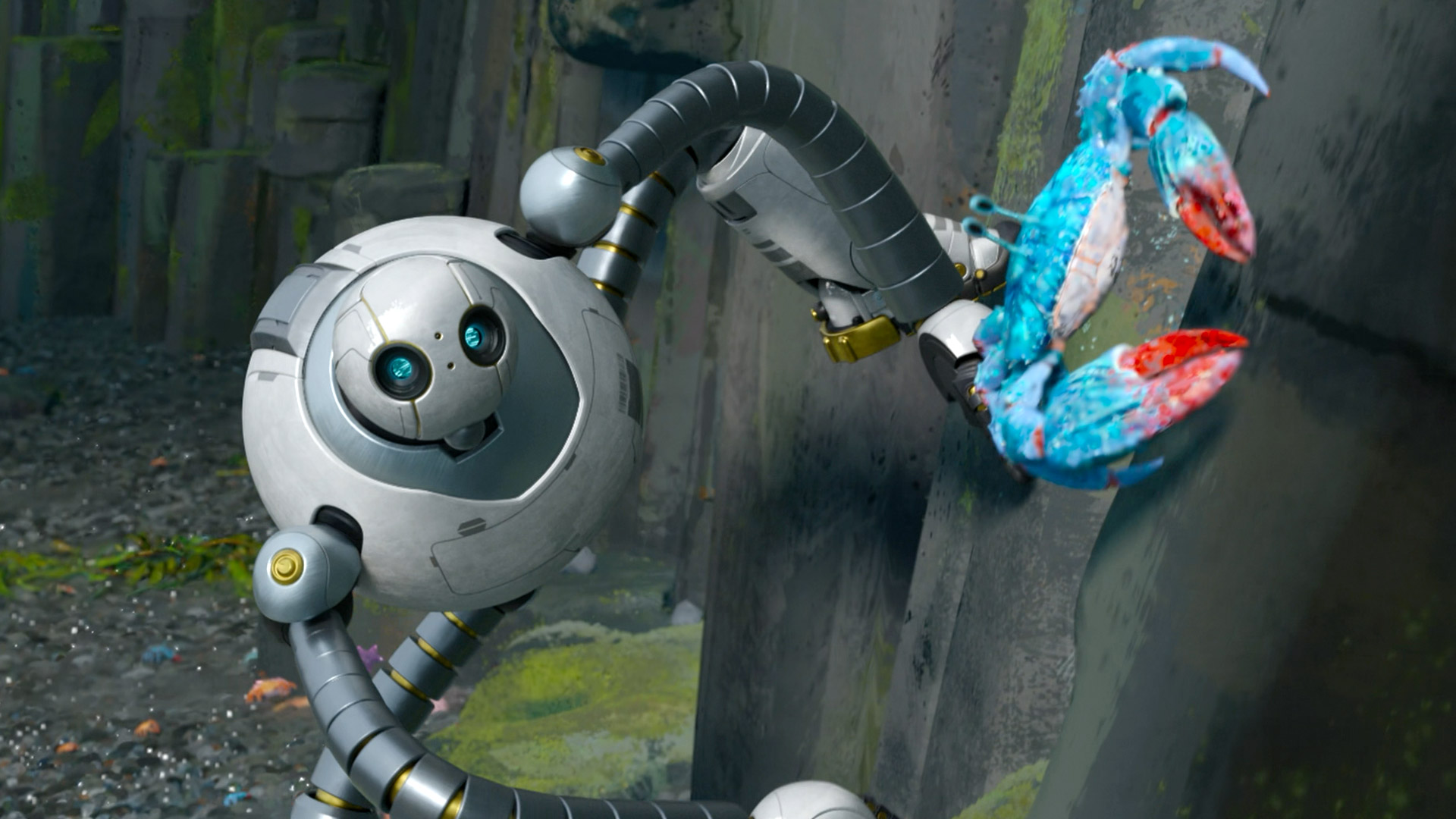
As another wave, much bigger than the previous one, approaches, Roz attempts to climb up the steep cliff to escape but fails, due to slippery surface of the rocky cliff. Roz then notices a native blue crab skillfully climbing up the cliff sideways.
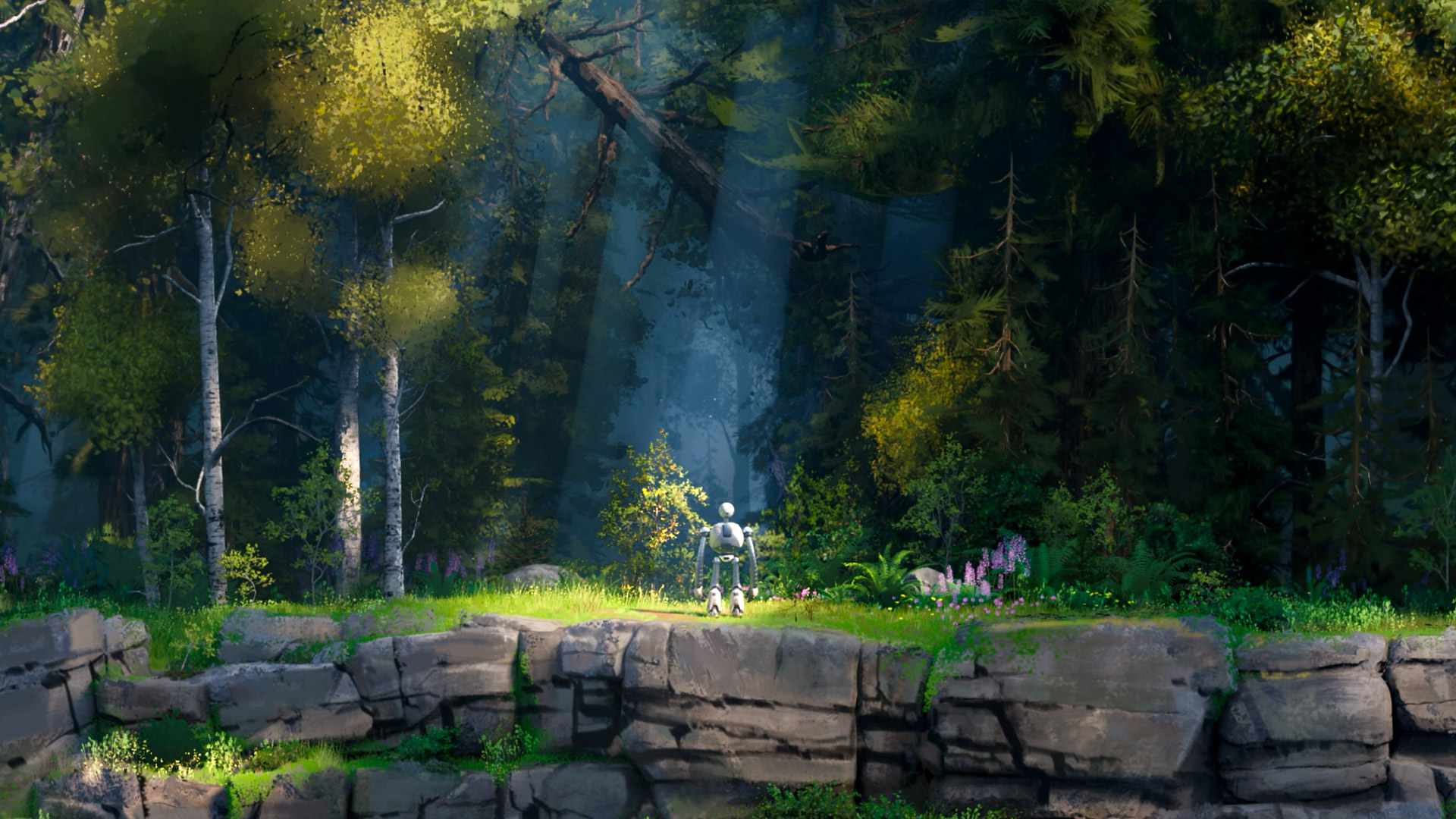
Quickly mimicking the crab’s movements, Roz manages to scale the cliff and reaches the top, where it finds itself at the edge of an island covered in lush green forest. Determined to find its customers, Roz decides to venture into the woods.
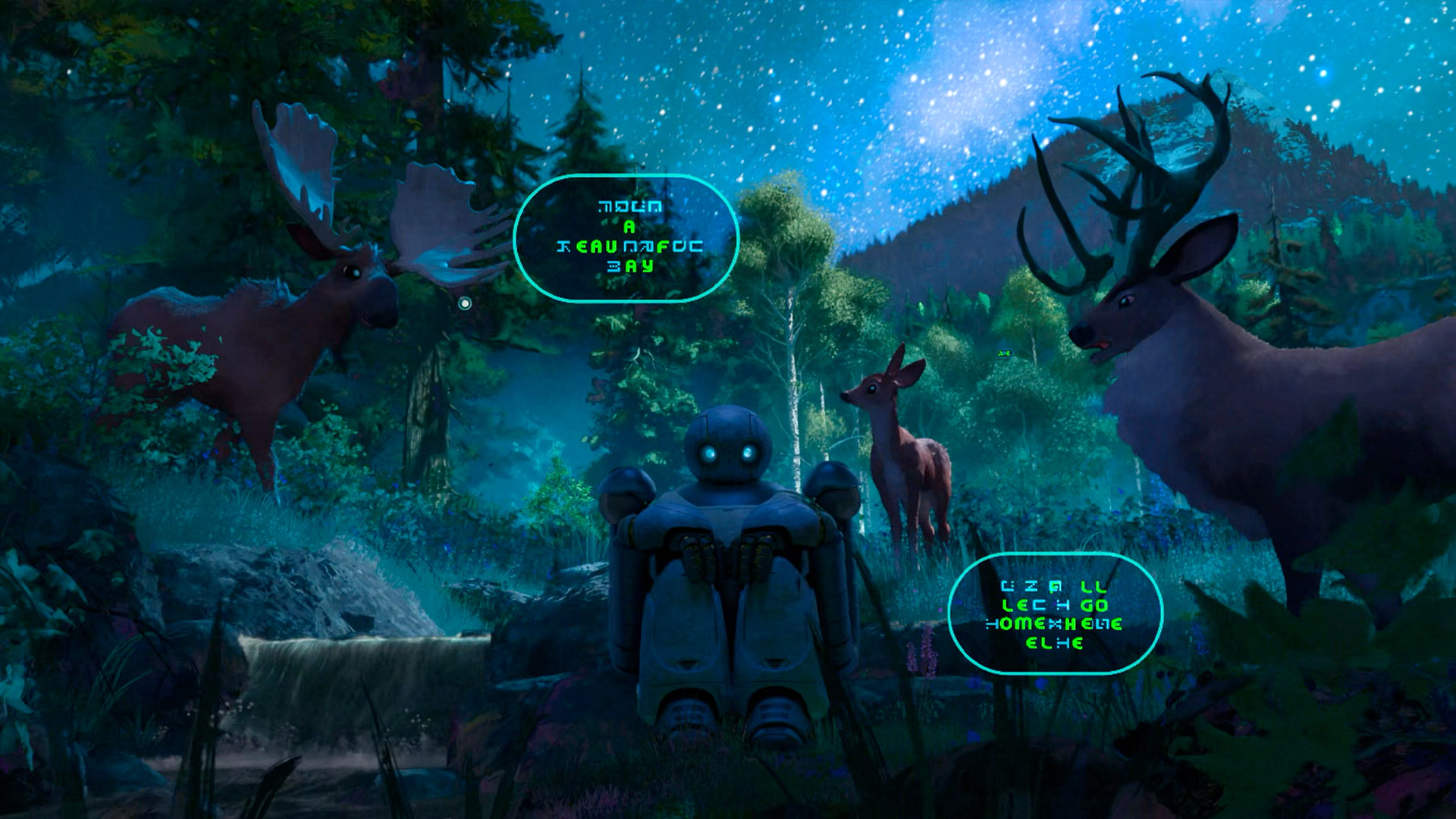
After multiple failed attempts to communicate with the native animals, Roz realizes it has no data on their language. Roz activates its learning mode and, several days later, awakens with the ability to decipher all animal languages. Now it can communicate with every creature inhabiting the island as if they were speaking English.
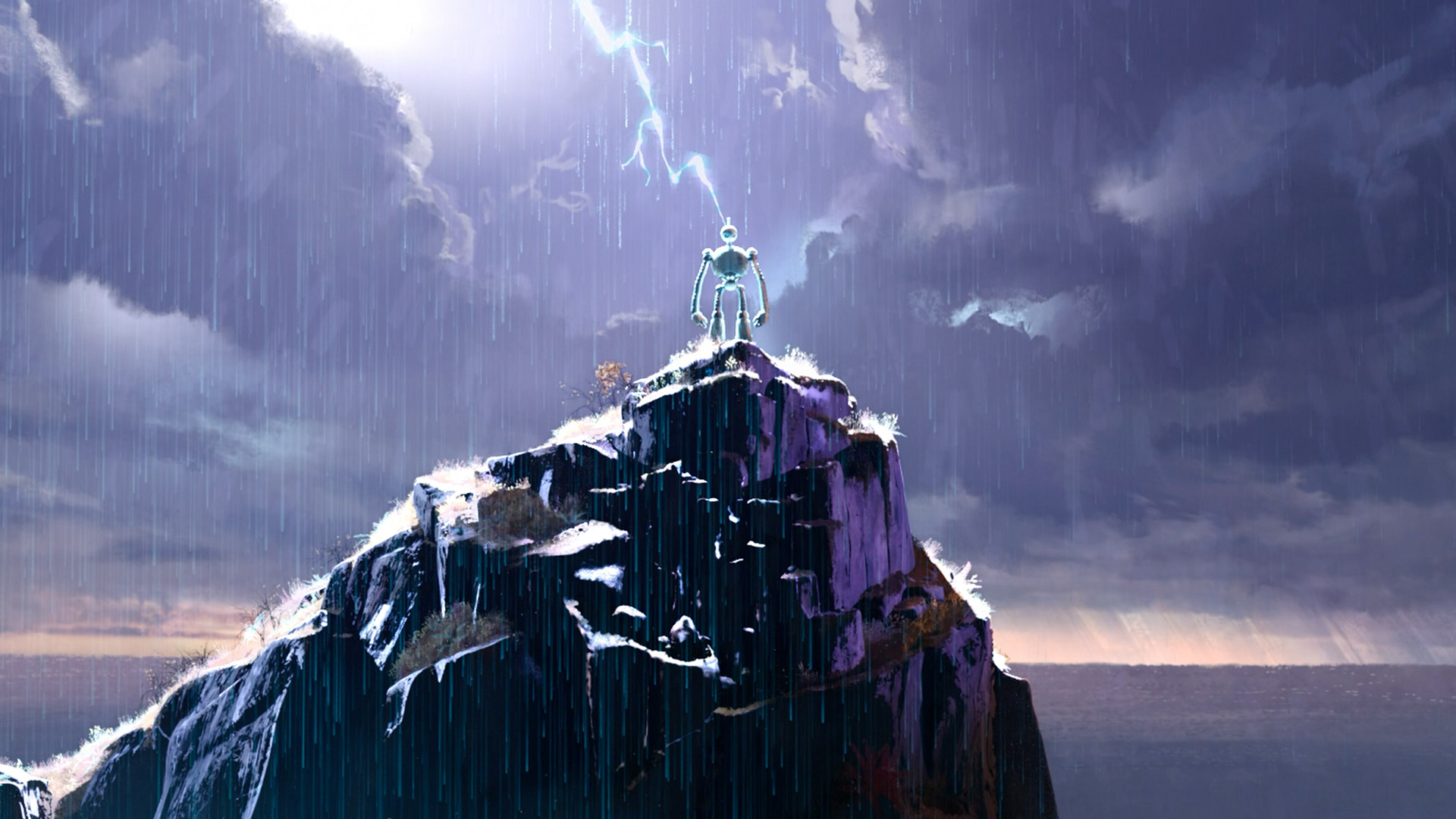
The native animals, however, are terrified of the robot, seeing it as a monster. Unable to locate its customers, Roz concludes that its delivery has failed and decides it must return to the factory. As a rainstorm approaches, it makes its way to the highest point of the island and activates its return transmitter. Suddenly, a lightning strike hits Roz, causing its system to temporarily shut down.

When Roz reboots and regains consciousness, it discovers that a group of raccoons has scavenged its parts. Although it manages to recover most of them, one raccoon snatches the return transmitter and runs away. Roz chases after the thieving raccoon, only to find itself in a bear’s cave.

A grizzly bear named Thorn (voiced by Mark Hamill) becomes agitated by the robotic intruder and charges after it. During the chase, Roz slips and tumbles down a hill, crash-landing into a goose nest. The impact kills the nest’s inhabitants, leaving only a single egg intact. Roz scans the egg and its x-ray confirms a life form inside the shell.
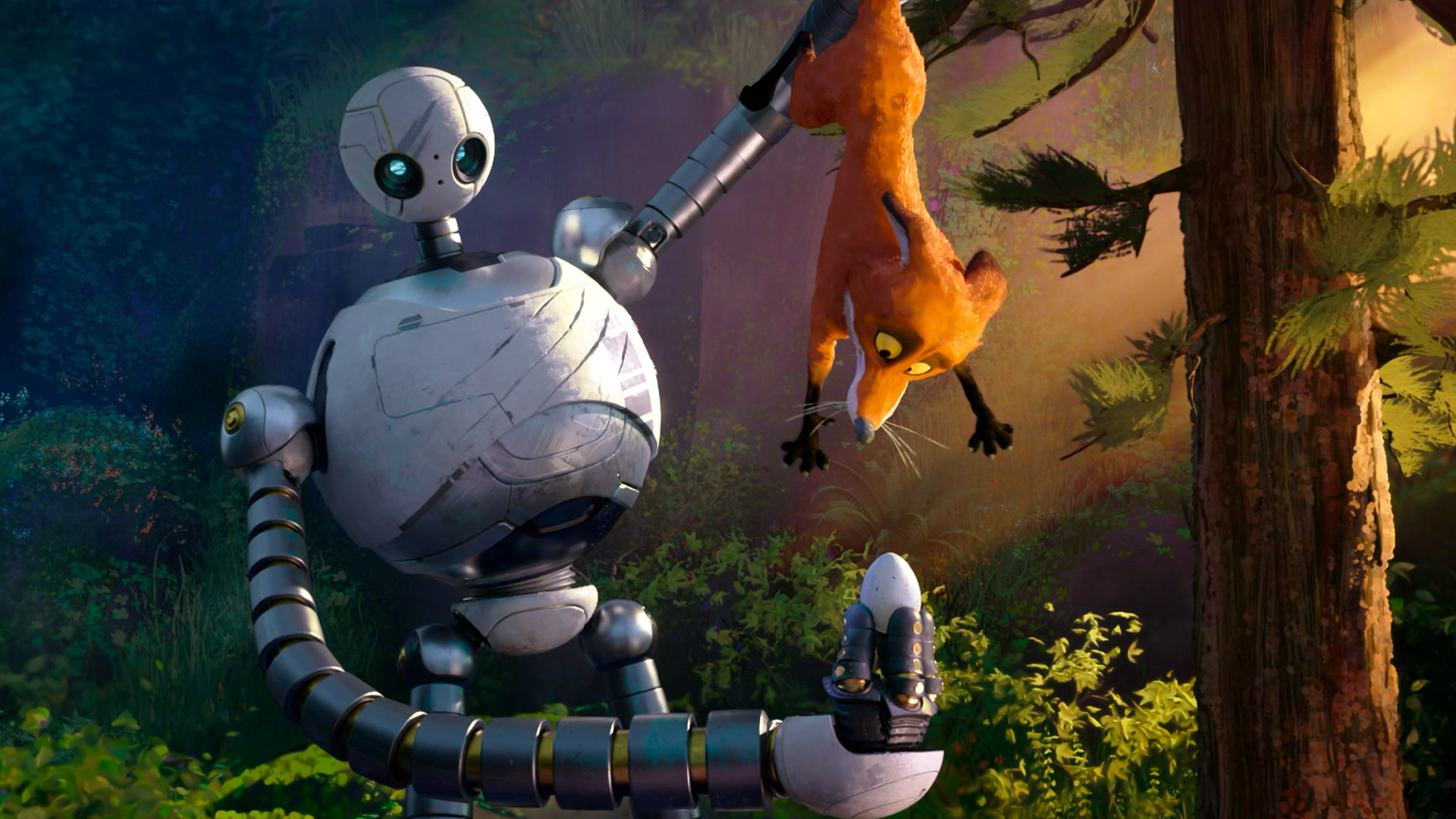
Roz takes the egg back to the forest, protecting it from a mischievous fox named Fink (voiced by Pedro Pascal), who repeatedly attempts to steal and eat it. When the egg finally hatches, the gosling immediately imprints on the robot.
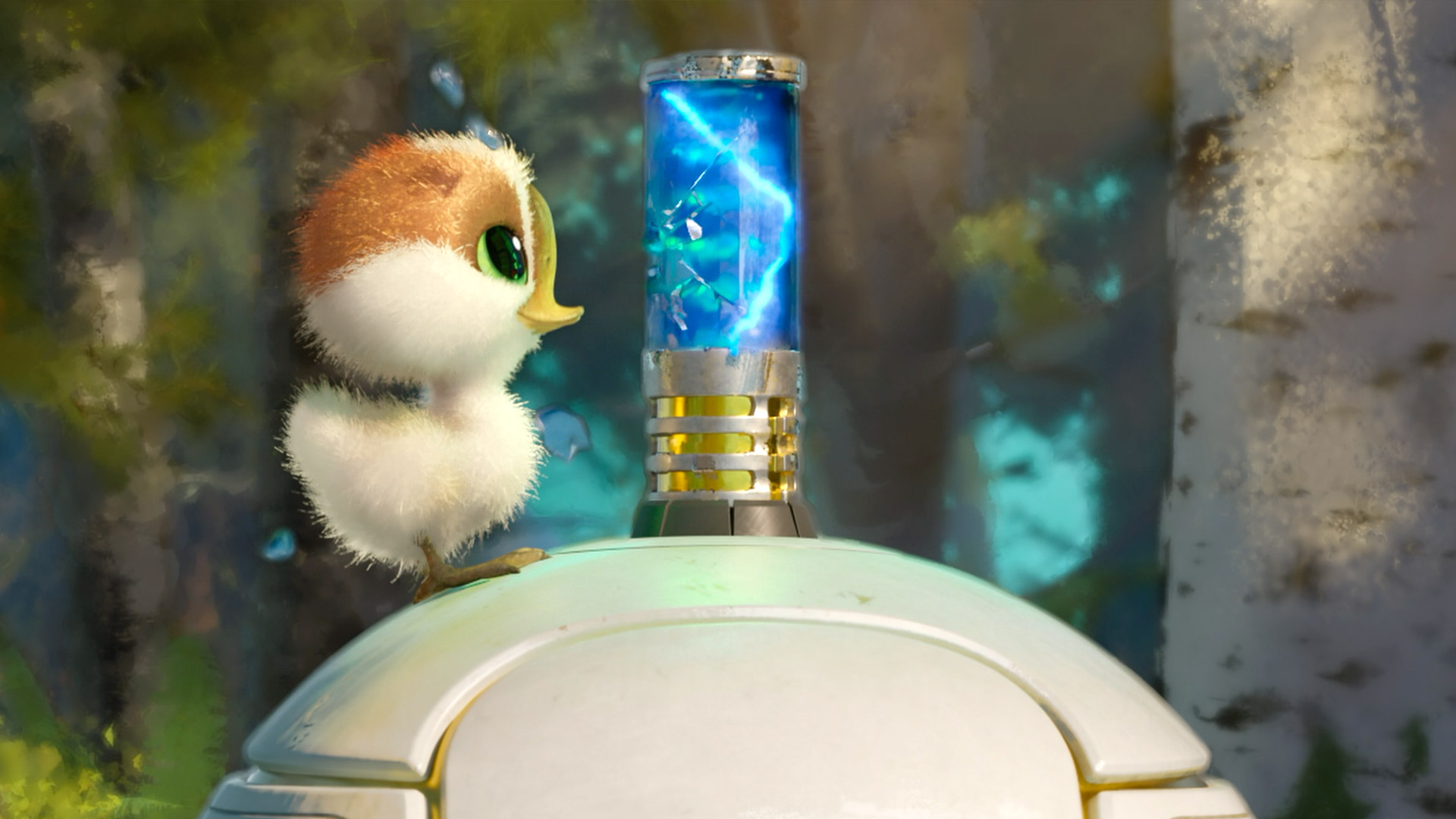
Believing its task is complete, Roz activates the return transmitter, but the gosling, attracted to the robot’s long-range transmitter, accidentally breaks it with its small beak. (Interestingly, while the return transmitter isn’t mentioned in the novel, the film adaptation shows it surviving several catastrophic incidents as if indestructible, only to be easily broken by a gosling’s tiny beak.)
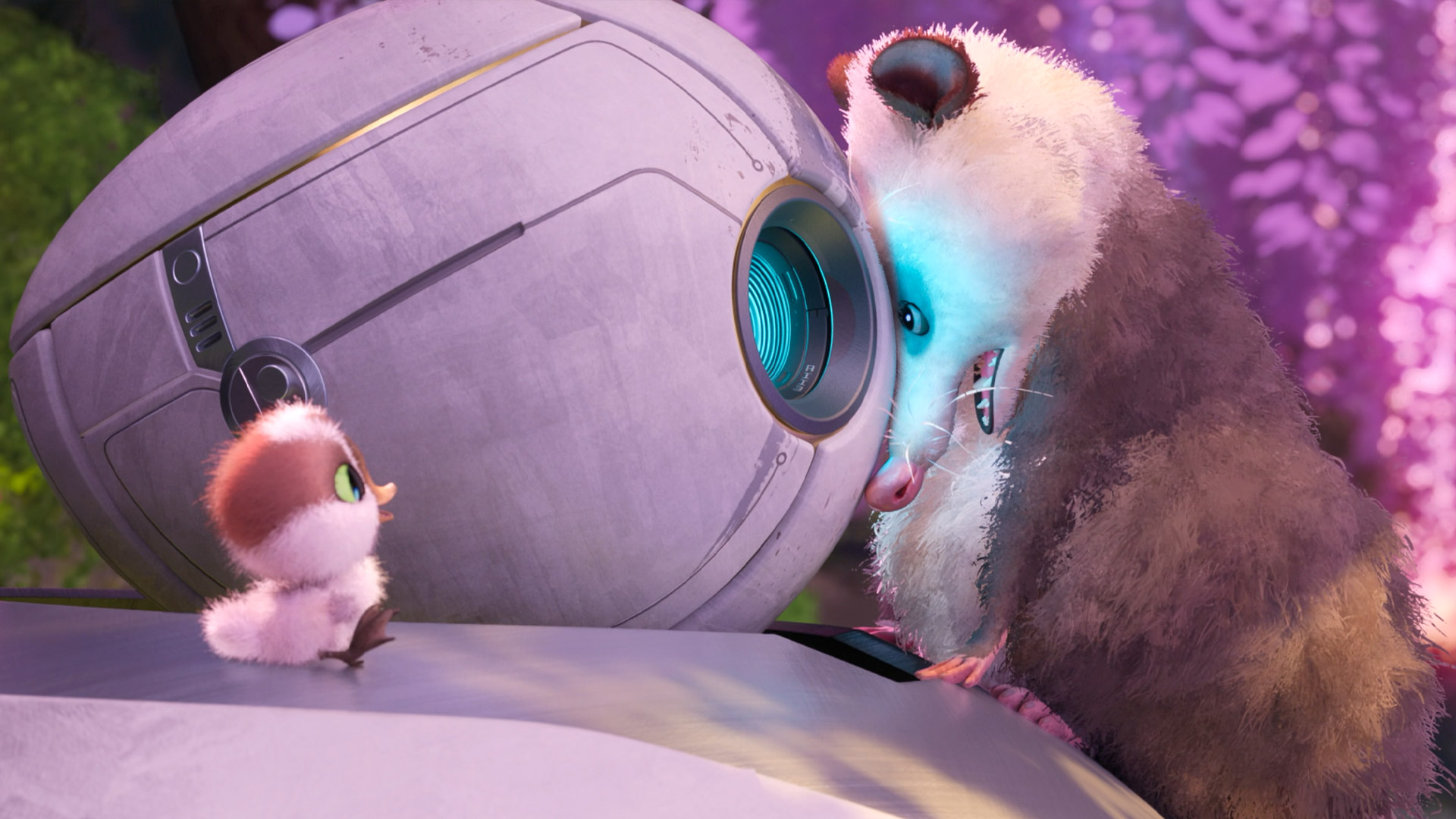
A mother opossum named Pinktail (voiced by Catherine O’Hara) explains that goslings imprint on the first thing they see, which is why the gosling believes the robot is its mother. Though Roz insists it is not programmed to be a mother, Pinktail tasks it with taking care of the gosling, ensuring it is fed, learns to swim, and, most importantly, can fly before winter migration begins.
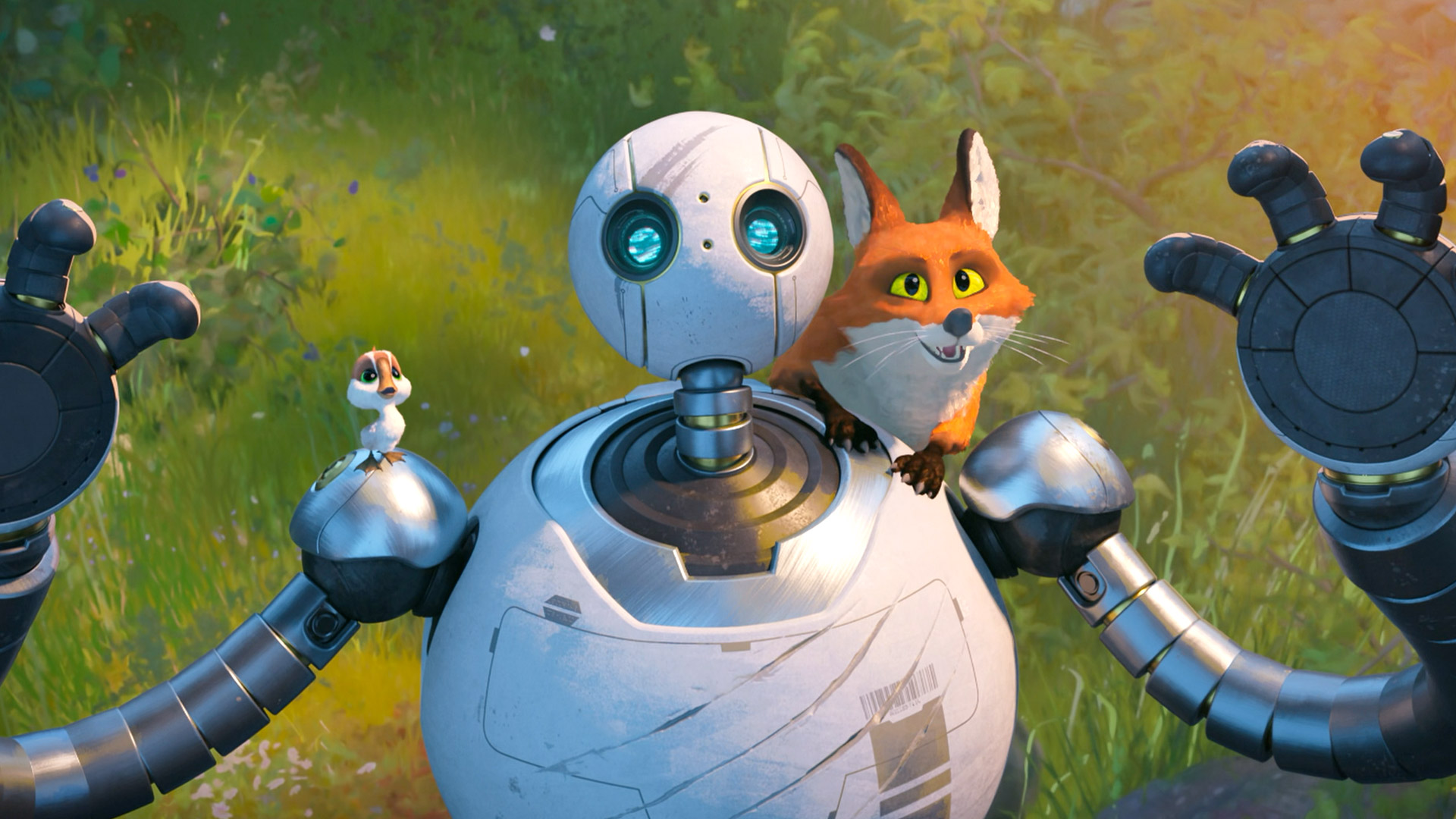
Fink watches as the robot awkwardly attempts to care for the gosling, realizing he could benefit from the situation. He befriends Roz by presenting himself as a local goose expert and offering assistance. Under the guise of helping, Fink instructs Roz to find food for the gosling, but in reality, he’s just using Roz to feed himself. Eventually, the three of them live together in a shelter of stone and wood built by Roz. Roz names the gosling Brightbill (voiced by Kit Connor).
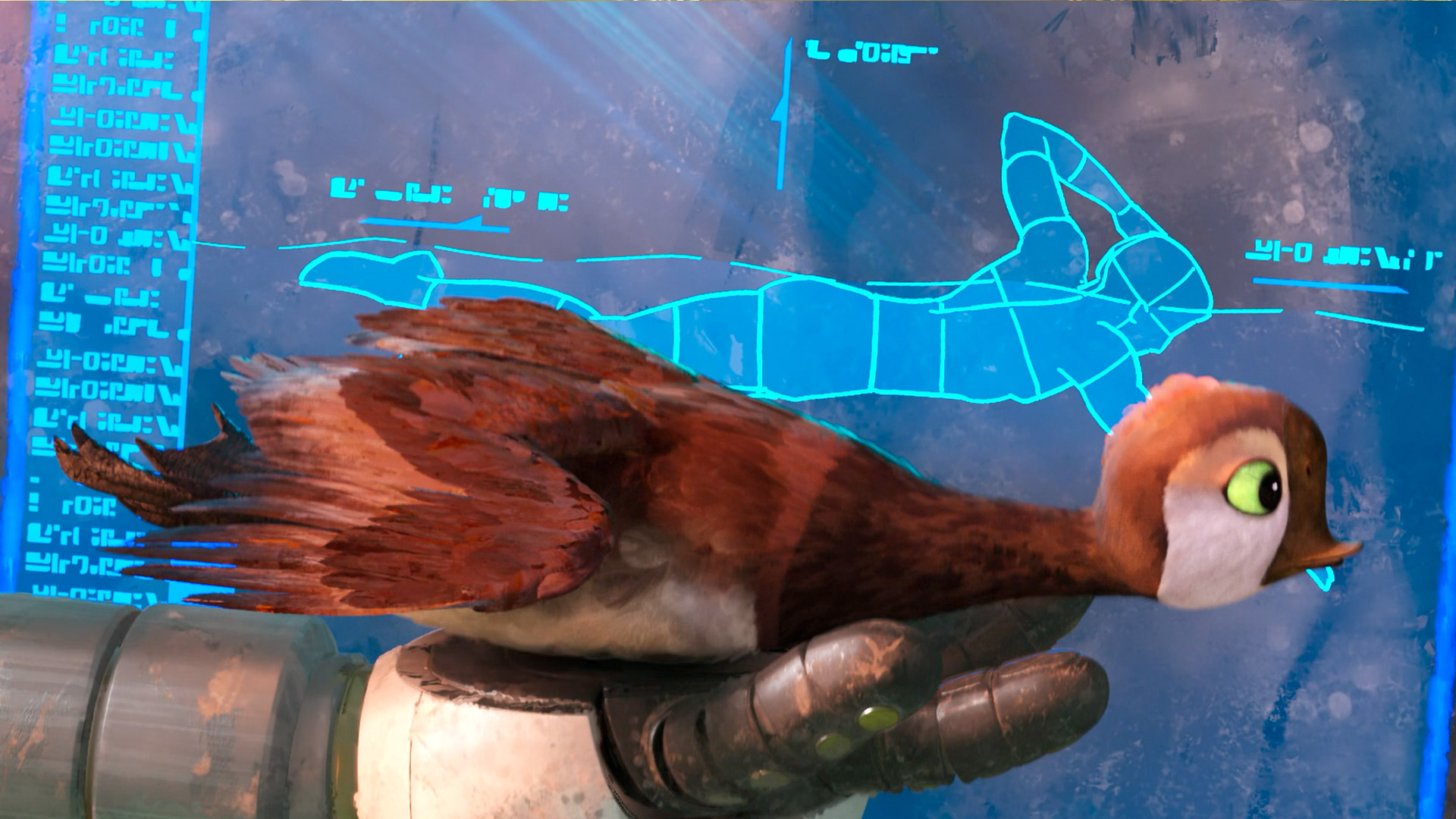
Months later, Brightbill has grown to maturity, and Roz teaches him to swim using human anatomy from its database. (Oddly enough, while the robot can decipher animal language, it fails to observe and understand basic goose anatomy. This differs from the original novel, where Brightbill learns to fly alongside other geese who have inhabited the island from the beginning, rather than their convenient appearance once Brightbill is fully grown.)
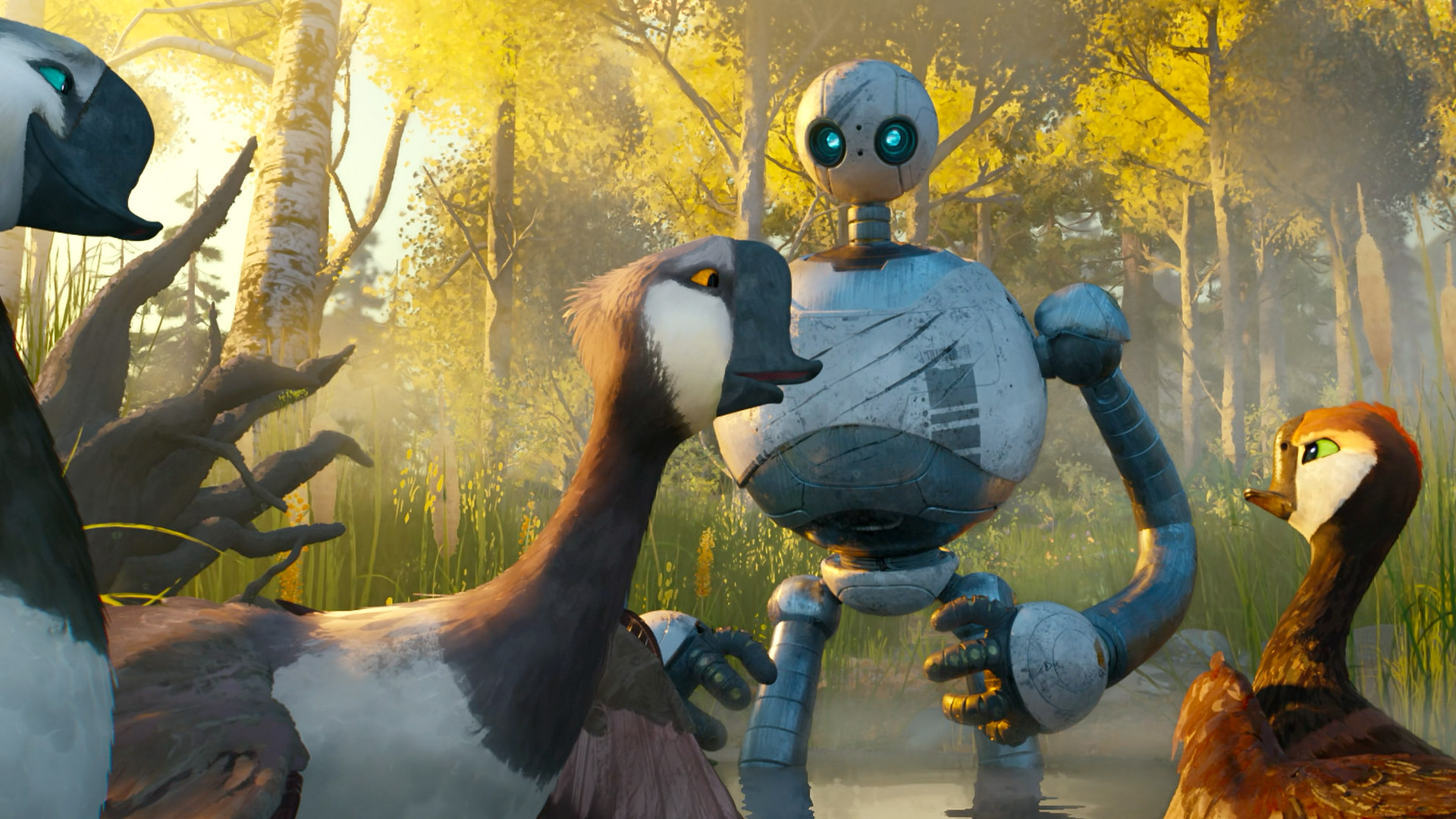
At a nearby lake, Brightbill encounters other geese who bully and mock him for being raised by the “monster robot” and believing it to be his mother. When they reveal that the robot was responsible for his mother’s death, a shocked and disturbed Brightbill reacts ungratefully, declaring he no longer needs Roz’s help before abandoning the shelter.
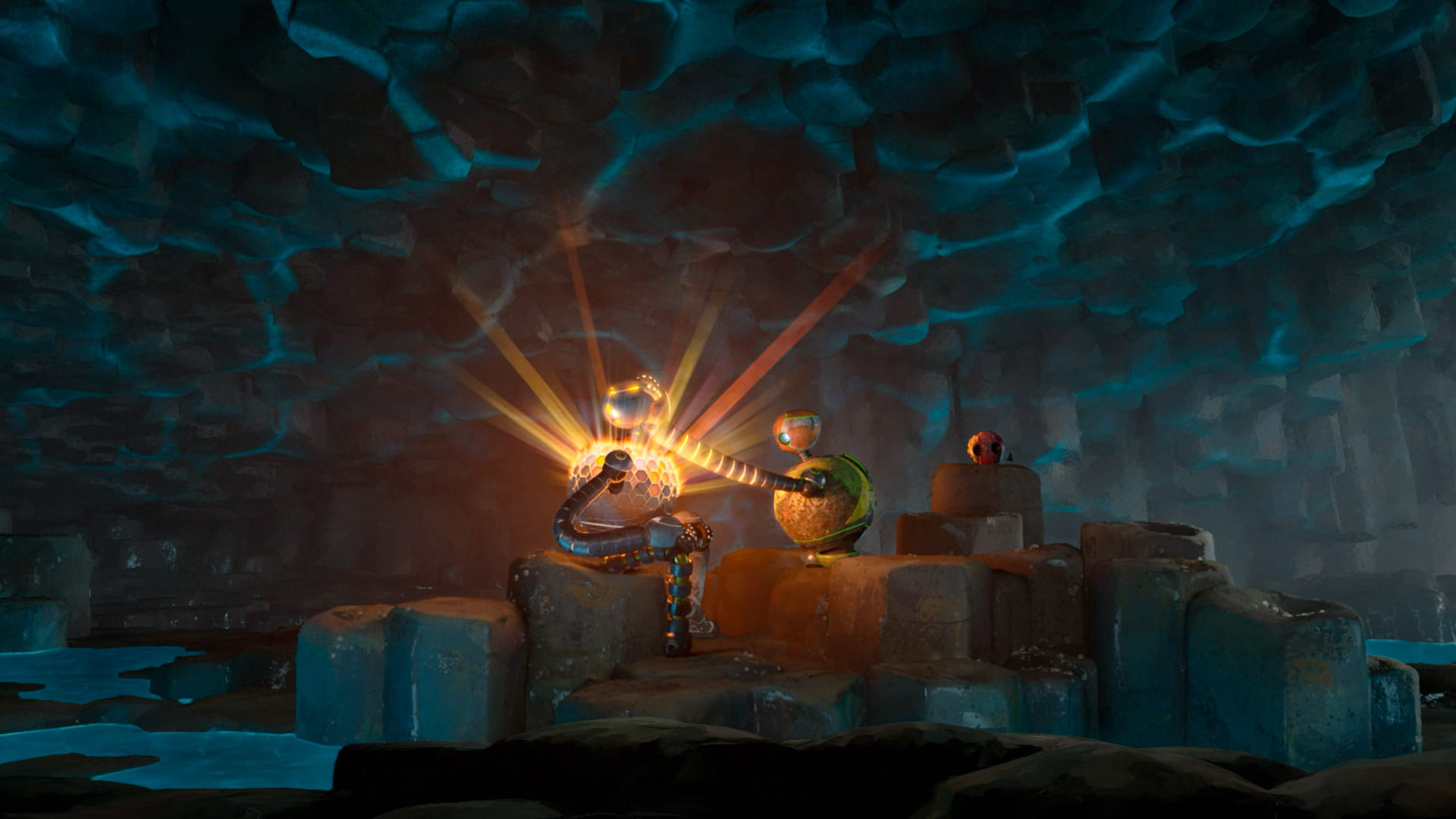
Frustrated and unable to send a signal home due to the broken transmitter, Roz visits the beach where she discovers debris from the shipwreck. Following the trail of wreckage, she finds a cave beneath the rocky cliff containing scattered robot parts, including a severed robot head. Roz attaches the head to another robot’s intact body and activates it, hoping for assistance. However, after running a diagnostic scan on Roz, the reactivated robot reports that her programming has deviated from its original state and declares her defective, insisting she must return to the factory. The robot then hands over its return transmitter to Roz.
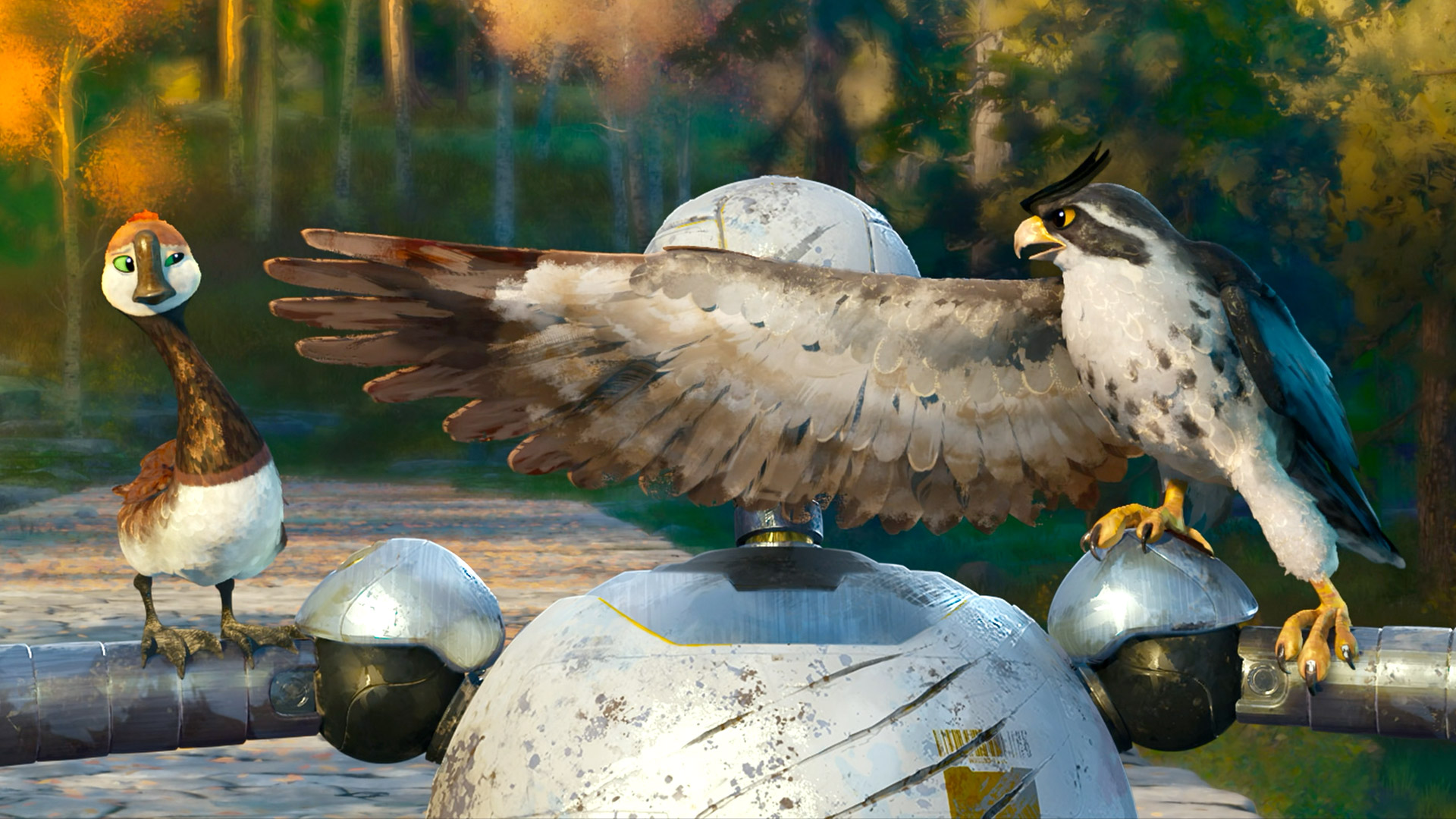
As Roz contemplates activating the return transmitter, Fink convinces her to help Brightbill learn to fly first, warning that he will not survive the approaching winter if he cannott migrate south. Though Brightbill initially refuses help from Roz and Fink, he reconsiders when Roz makes a deal: if he accepts their help, he can fly away to join other geese while she returns to the factory – each going where they truly belong. To accomplish this task, Roz enlists a falcon named Thunderbolt (voiced by Ving Rhames) as a flight instructor for Brightbill.
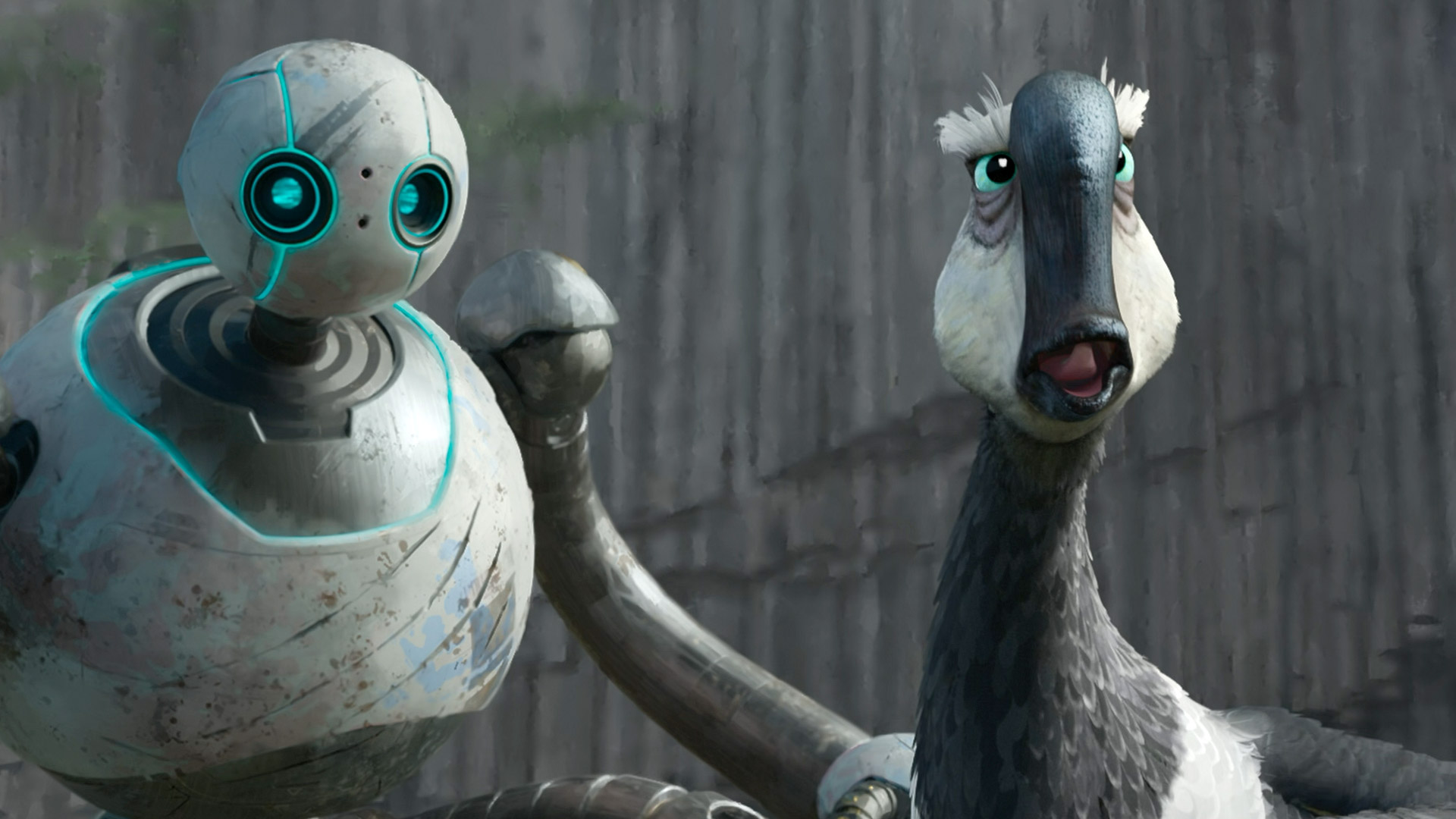
During Brightbill’s practice sessions, Roz is approached by Longneck (voiced by Bill Nighy), one of the migration leaders who has been observing them for some time, impressed by their dedication. He offers Brightbill a place in the migration, but with one condition: Brightbill must prove his endurance by flying from dawn to dusk. Longneck explains that the journey south is more dangerous for Brightbill than anyone else.
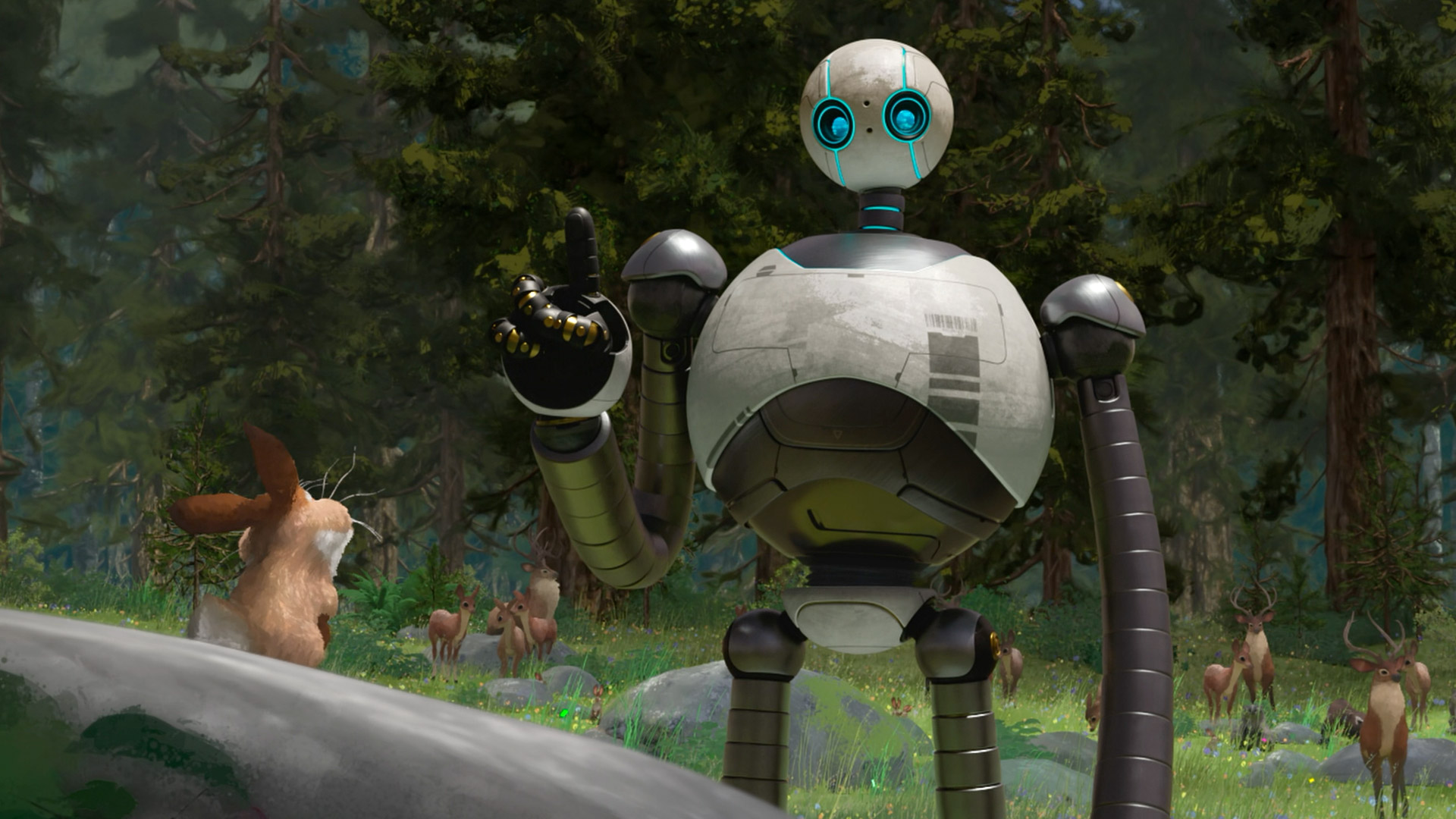
Written and directed by American filmmaker Chris Sanders, The WILD ROBOT is based on Peter Brown’s 2016 children’s novel of the same name about a robot who finds herself stranded on an uninhabited island after a cargo ship accident. As she awakens without any memory of how she arrived there or her purpose, she must navigate her new environment and learn how to survive in the wild.
Peter Brown is a prominent American author and illustrator, best known for his engaging children’s books. His works often explore themes of nature, identity, and friendship, resonating with both children and adults. Brown’s storytelling is complemented by his unique illustration style, which combines various mediums such as watercolor and gouache.
THE WILD ROBOT by Peter Brown is a highly acclaimed children’s novel that has gained significant popularity since its release. It is a #1 New York Times bestseller and has been recognized as one of the best middle-grade books of the year by various publications. As of October 2024, The WILD ROBOT series consists of three books: THE WILD ROBOT (2016), THE WILD ROBOT ESCAPES (2018), and THE WILD ROBOT PROTECTS (2023).
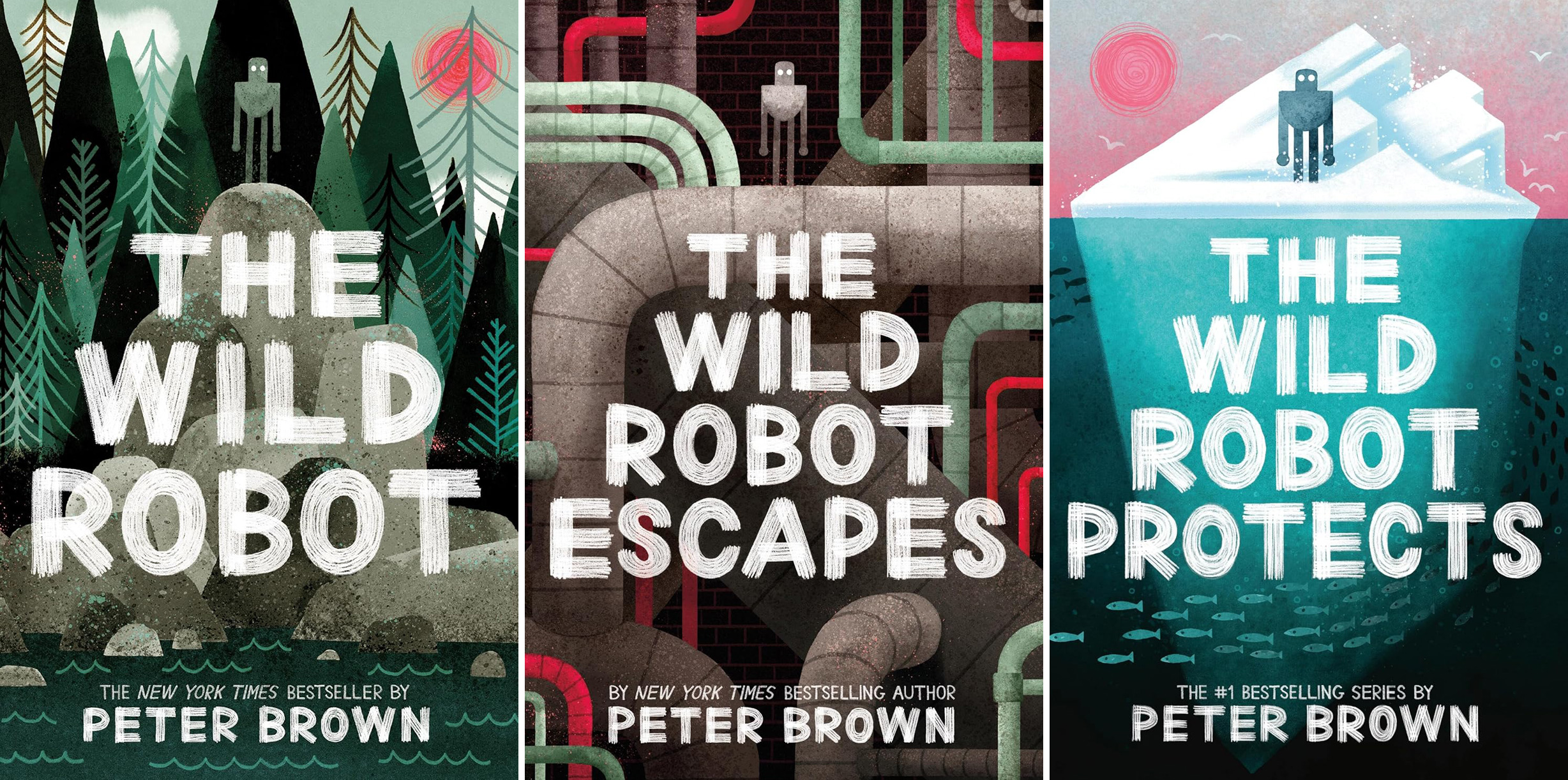
Each installment follows the journey of Roz, the robot, as she navigates challenges in both the wild and civilized worlds. The WILD ROBOT animated film is primarily based on the first book in Peter Brown’s series.
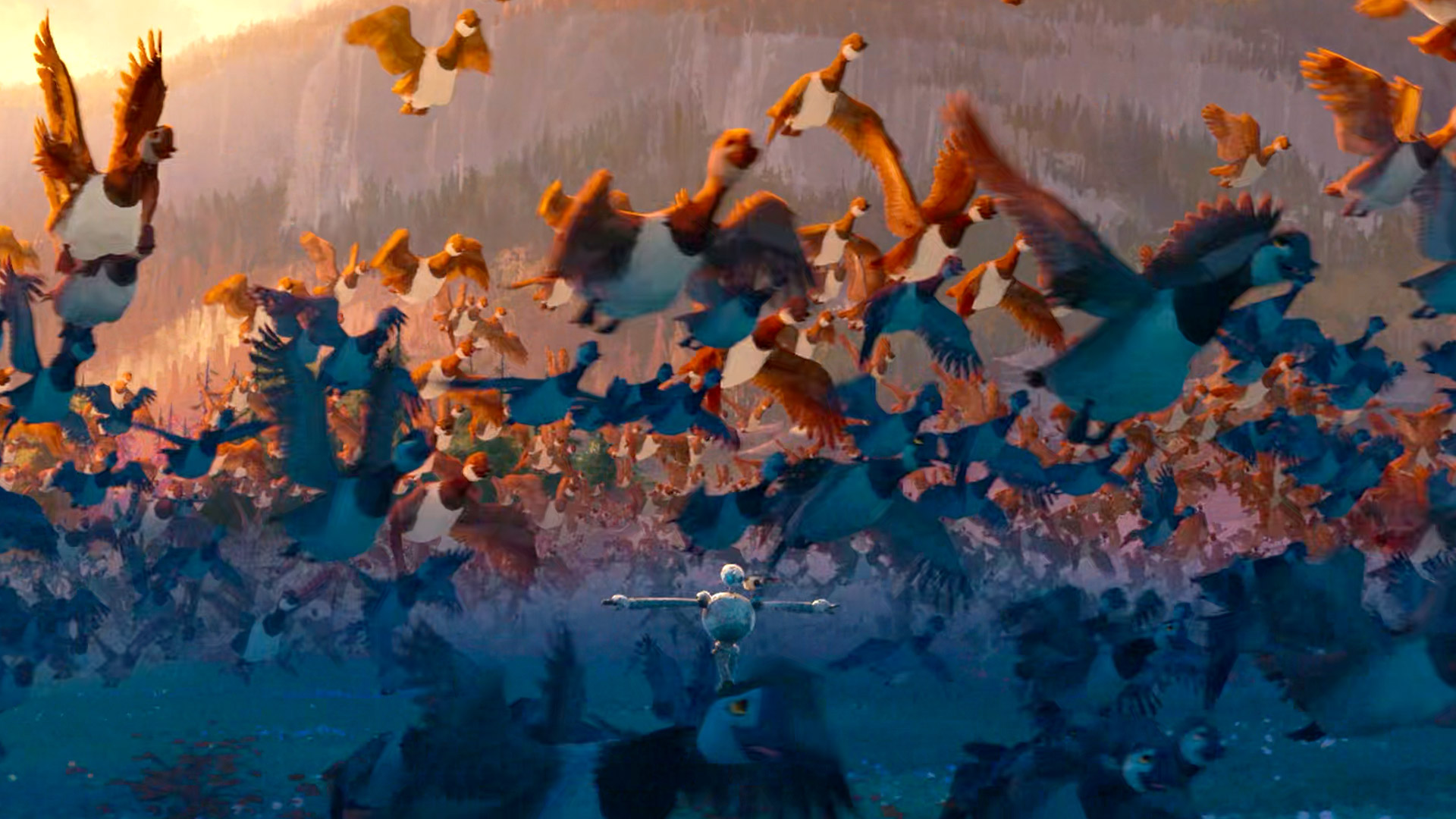
While the animated film is visually stunning, with beautiful and vibrant colors, I find its narrative lacks depth. It feels too generic and, at times, unconvincing. The pacing is deliberately slow in some parts, and certain scenes resemble music videos, accompanied by songs that aim to evoke emotions through their lyrics.
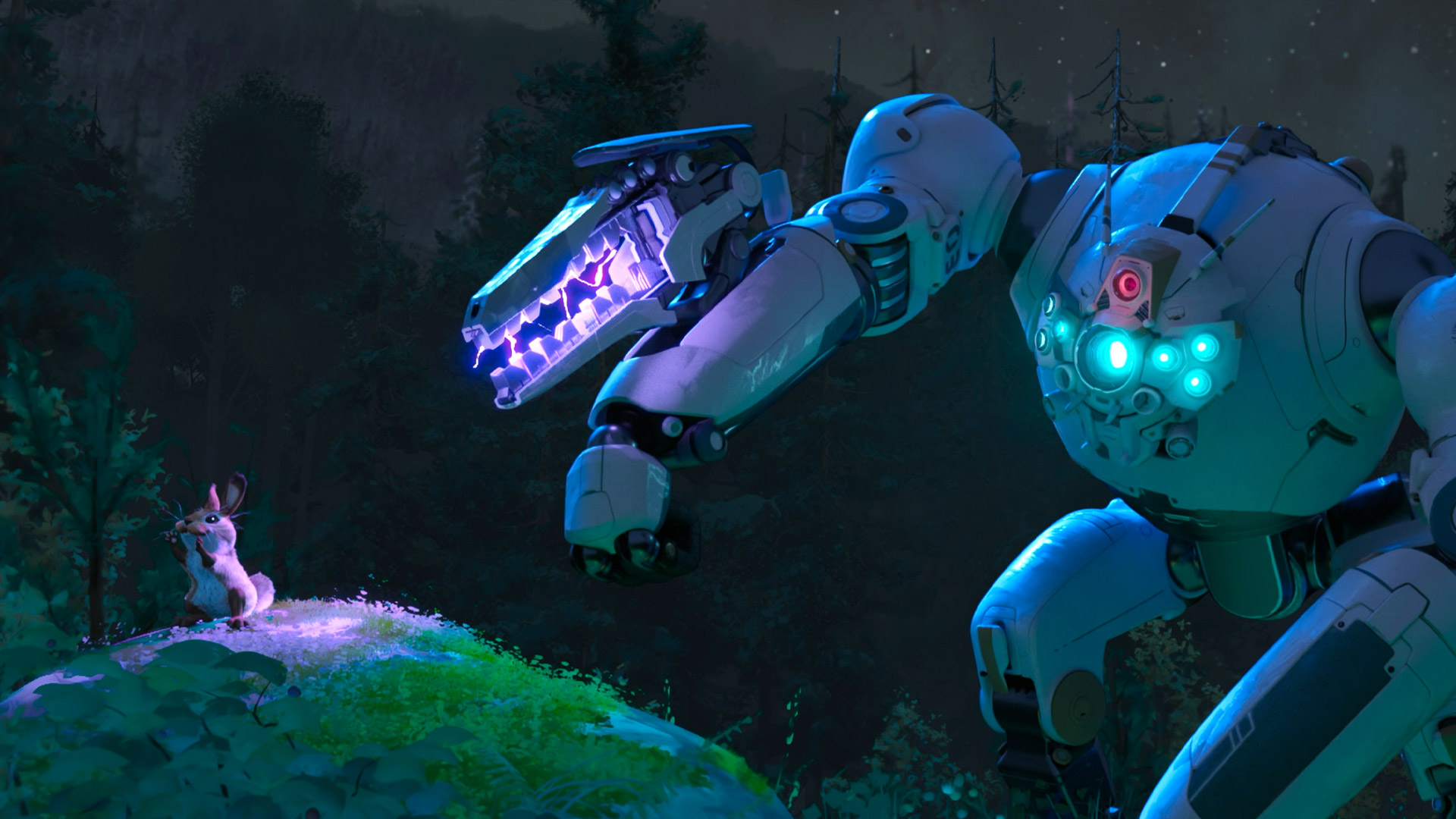
Additionally, the final act feels rushed, with events unfolding in a domino effect that leaves little room for comprehension. Despite the story being quite predictable and straightforward, it lacks any unexpected twists that could make it memorable.
One aspect that arguably bothers me the most is Roz’s ability to learn and communicate with all the animals on the island (thanks to her magical AI brain) who all seem to speak the same language regardless of their species. Moreover, the animals exhibit behaviors fundamentally rooted in human culture; for instance, they mock and bully Brightbill for being different, learn to work together, and coexist despite being natural predators and prey.
If you want them to behave like animals, then let them be animals. Conversely, if you want them to act like humans, then create a world centered around animals, similar to Disney’s Zootopia or ROBOT DREAMS. This film also relies too heavily on animal dialogue to convey its messages.
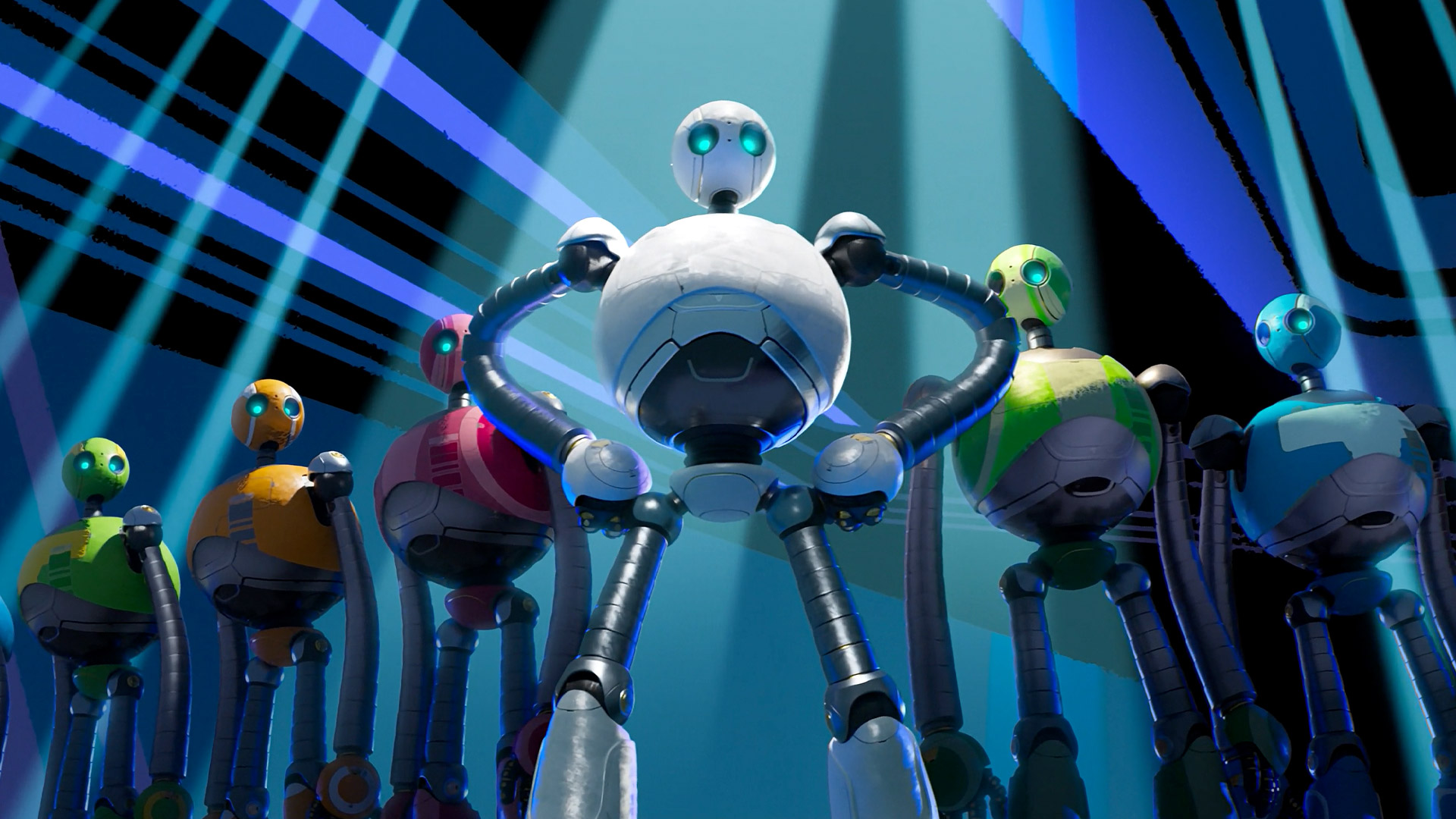
Roz’s character seems derivative, combining elements of Disney’s Baymax (BIG HERO 6) and Pixar’s WALL-E, particularly in how she follows programmed directives until an unexplained change occurs. Essentially, there is nothing new about Roz; she is just another robot capable of overriding pre-programmed directives, much like many robots that have come before her.
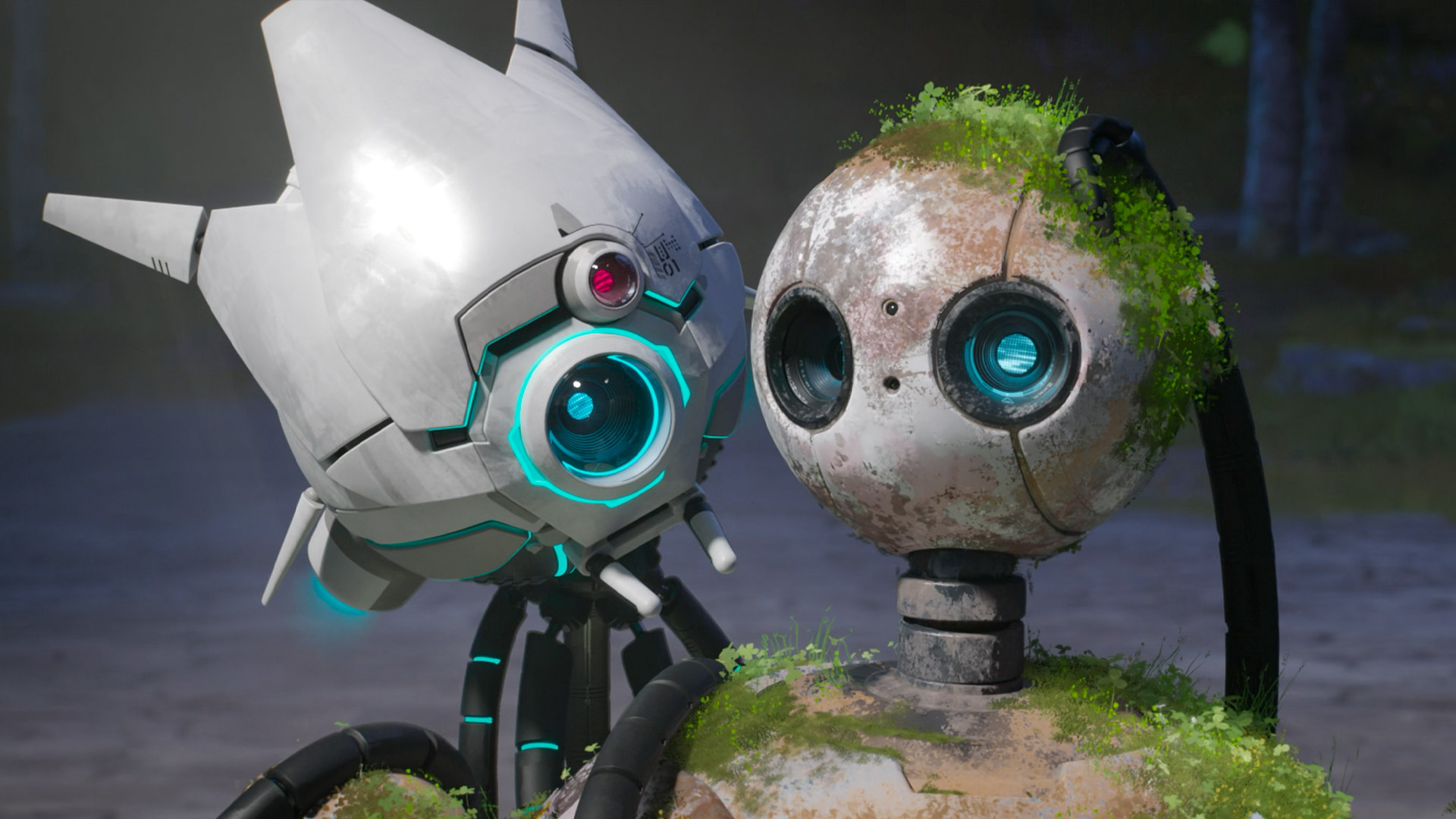
Why is Vontra (splendidly voiced by Stephanie Hsu) oddly humanized in her excessive dialogue and behavior, despite being a robot capable of executing commands without human-like interactions?

While THE WILD ROBOT will entertain younger audiences despite its predictability, its emotional moments feel forced and formulaic. The film simply follows a predetermined sequence of events, using musical cues to signal appropriate emotional responses — be it happiness, sadness, or whatever emotion they aim to evoke.
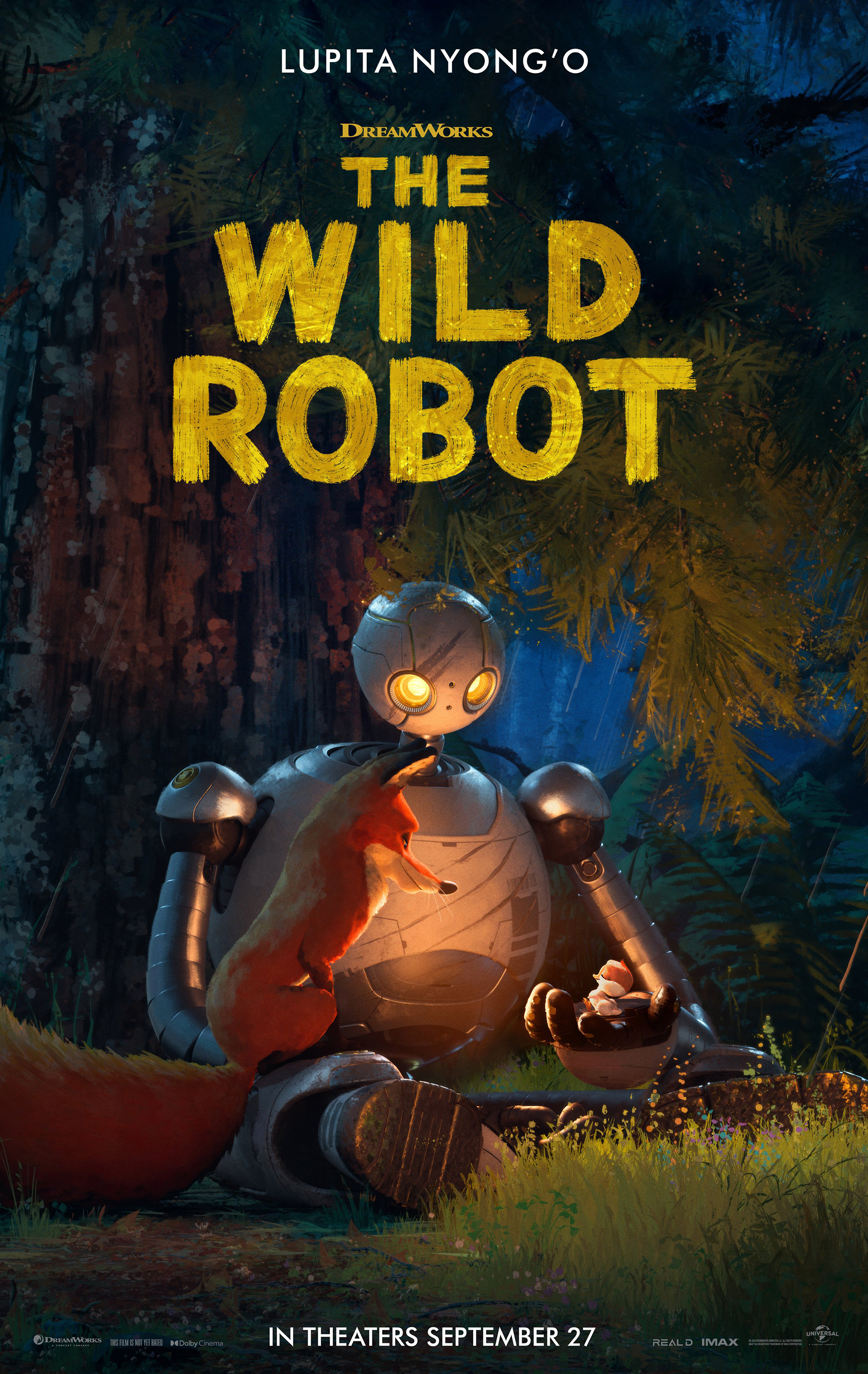
The WILD ROBOT premiered at the Toronto International Film Festival on 8 September 2024. It was theatrically released in the United States on 27 September. As of 16 October 2024, the film has grossed over $154 million worldwide against its $78 million production budget.




